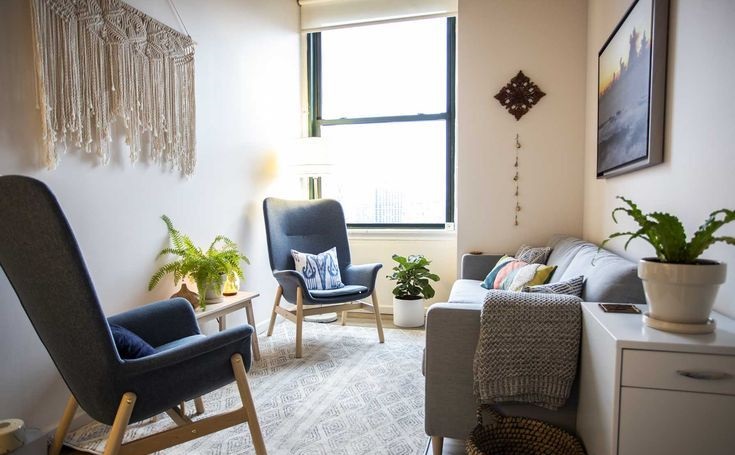Understanding the importance of a well-designed therapy office environment is crucial for client well-being and psychological comfort. A therapy office that caters to the specific needs of clients can significantly enhance the therapy experience and contribute to better therapy outcomes. Here are essential elements that make a therapy office environment conducive to client needs.
Comfortable Seating
Choosing comfortable seating is fundamental to creating a welcoming therapy space. Ergonomic chairs that provide support can help clients feel relaxed and secure, setting the tone for an effective therapy session. Investing in quality seating not only benefits clients but also enhances the business aspect of the therapy practice, attracting more clients through word of mouth.
Comfortable seating also includes considering the various physical needs of clients. Options such as adjustable chairs and cushions can cater to individuals with different body types and preferences. By prioritizing comfort, therapists can ensure that their clients remain focused on the therapeutic process rather than physical discomfort.
In 2023, 83% of therapists saw an increase in new patients seeking counseling for the first time, underscoring the growing demand for mental health services. A comfortable seating arrangement can play a pivotal role in retaining these new clients. Therefore, it’s crucial for therapy offices to create an environment where clients feel at ease from the moment they sit down.
Soft Lighting
Proper lighting can significantly influence the atmosphere of a therapy office. Soft lighting, as opposed to harsh fluorescent lights, creates a calming and inviting ambiance. Using lamps with adjustable settings allows therapists to modify the lighting according to the time of day and the specific needs of the session.
Lighting can also be employed to reduce stress and anxiety in clients. Natural light bulbs that mimic daylight can help improve mood and reduce symptoms of depression. It’s essential to balance natural and artificial light sources to create a therapeutic environment that feels both natural and soothing.
Additionally, lighting should be considered for its impact on conducting the business of therapy. Effective lighting creates a professional yet comforting space, which can influence clients’ perceptions and satisfaction. Satisfied clients are more likely to return and recommend the practice to others.
Neutral Color Palette
The color scheme of a therapy office plays a crucial role in setting the mood of the space. Neutral colors, such as beige, soft grays, and light pastels, can help create a calming environment. These colors are less likely to cause overstimulation or distract clients, aiding in their ability to relax and engage in therapy.
Neutral palettes also provide a timeless and professional look to the office. This can benefit the business by appealing to a wide range of clients and making the space adaptable for various therapeutic settings. More subtle colors contribute to a sense of stability and security, essential for a therapeutic environment.
Using neutral colors also makes the office feel more spacious and open. This design choice can be especially beneficial in smaller offices where making the most of available space is necessary. A visually appealing and comfortable environment supports both client satisfaction and business success.
Soundproofing
Soundproofing is another essential element in creating a conducive therapy environment. Ensuring that the therapy space is free from external noise allows clients to focus on their sessions without distractions. Soundproofing techniques include adding heavy curtains, acoustic panels, and weatherstripping around doors and windows.
For therapy offices located in busy urban areas, soundproofing can be particularly beneficial. Reducing outside noise helps create a sanctuary-like atmosphere where clients feel safe to express themselves freely. Given that about 10% of pregnant women experience mental health disorders, a soundproof environment is essential for their comfort and mental well-being.
Soundproofing not only enhances client comfort but also maintains the confidentiality and privacy of sessions. The assurance that conversations cannot be overheard helps build trust between therapists and clients, which is vital for successful therapy outcomes. In this way, effective soundproofing supports the core business values of confidentiality and client care.
Accessible Design
Creating an accessible therapy office is essential for accommodating clients with diverse needs. Features such as ramps, wide doorways, and adjustable furniture ensure that the space is inclusive. An accessible design reflects the therapist’s commitment to providing care for all clients, regardless of physical limitations.
Accessibility extends beyond physical features to include sensory considerations. Providing a quiet room with minimal distractions can be particularly beneficial for clients with autism. An inclusive and accessible environment can enhance the reputation of a therapy practice, making it more appealing to a broader clientele. This inclusive approach is not only ethically sound but also good for business, as it opens up the practice to a more diverse client base.
Personalization With Minimal Distraction
Personalizing the therapy office can make clients feel more comfortable and welcome. Personal touches, such as family photos or artwork, can help create a warm and inviting space. However, it’s important to strike a balance to avoid overwhelming clients with too much decor.
Minimal distractions are key to maintaining focus during therapy sessions. While personalization can enhance the ambiance, it’s essential to keep the overall design simple and uncluttered. This approach ensures that personal elements blend seamlessly into the environment without detracting from the therapeutic process.
Diagnoses of individuals with autism have risen over the last 30 years, making it crucial to create environments that minimize sensory overload. Personalization should be thoughtfully integrated to cater to the diverse needs of all clients. A balanced approach to decor can add warmth and individuality to the space, benefiting both client engagement and business branding.
Temperature Control
Maintaining a comfortable temperature in the therapy office is essential for client well-being. An environment that is too hot or too cold can be distracting and uncomfortable, hindering the effectiveness of therapy sessions. Ensure that heating, ventilation, and air conditioning systems are functioning properly and can be easily adjusted.
Temperature control is especially important for clients with specific sensitivities or medical conditions. For example, individuals with anxiety may be more affected by temperature fluctuations. Providing a stable and comfortable temperature can help clients feel more at ease and focused during their sessions.
A well-regulated temperature environment reflects the therapist’s attention to detail and commitment to client comfort. This can enhance the overall experience for clients, contributing to positive therapy outcomes and client satisfaction. In turn, a comfortable therapy environment can improve client retention and business growth.
A well-designed therapy office not only benefits client well-being but also supports the business of therapy practice by attracting and retaining clients. By prioritizing these elements, therapists can create a welcoming and effective therapeutic environment.





Be First to Comment